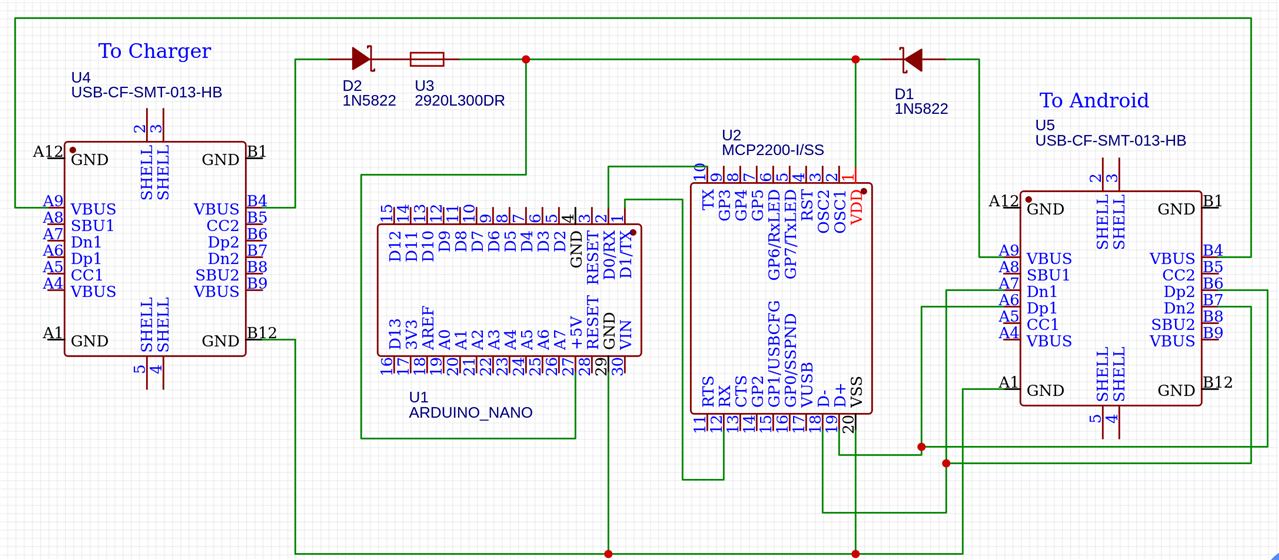Okay, so I want to access Arduino GPIO pins via Android. My plan is to access them via a serial connection using an MCP2200. I can read / write to the serial port on Android, which can then interact with the Arduino.
The problem is I also want to be able to plug in the phone and have it charging while still being able to access the Arduino. I came up with this, but am pretty new to the electronics side of things and want to avoid blowing things up. Will this do what I want?
It's essentially two USB ports. One goes to the charger, the other to the phone. The Arduino and MCP2200 sit in the middle.

